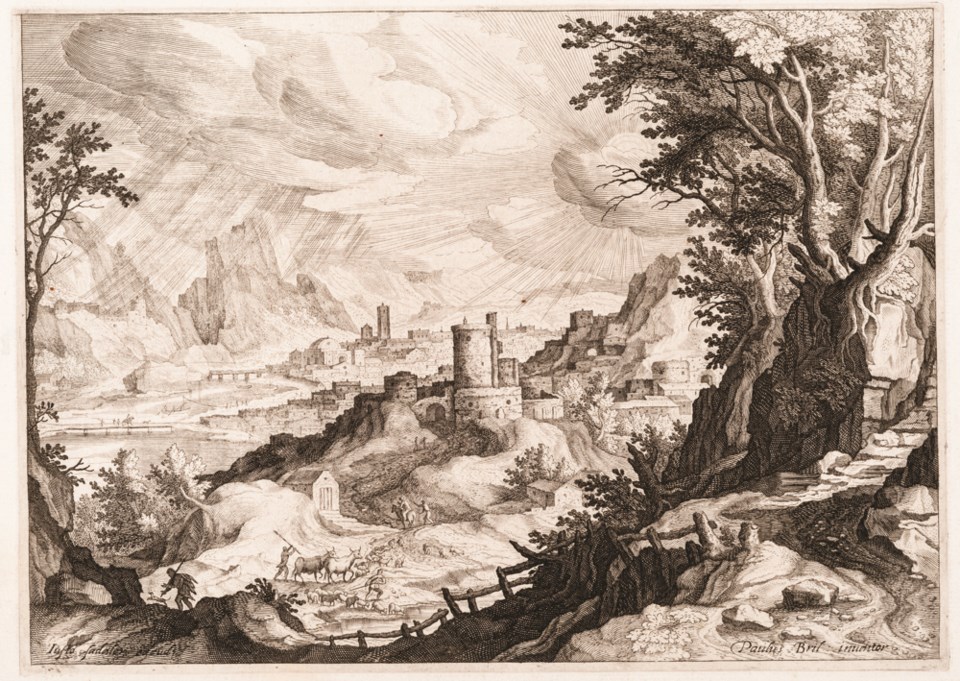The Audain Art Museum’s new special exhibit arguably couldn’t be more different than the one before it.
After hosting Out of Control: The Concrete Art of Skateboarding, showcasing the intersection of contemporary art and skateboarding, last weekend, the museum welcomed The Collectors’ Cosmos: The Meakins-McClaran Print Collection.
This latest exhibit features more than 170 works of 16th- and 17th-century Dutch and Flemish prints, amassed by private collectors and donated to the National Gallery of Canada.
“It’s a very clear about-face from skateboarding to 16th- and 17th-century prints, but that’s very deliberate,” says Curtis Collins, director and chief curator of the museum. “It speaks to the range the Audain Museum wants to attract.”
For its part, the exhibit’s opening weekend attracted Drs. Jonathan Meakins and Jacqueline McClaran, the prints’ original collectors, to Whistler for the first time.
“The collectors both gave a public tour on Saturday,” Collins adds. “They were so thrilled to be able to personally engage with some of our members, docents, and members of the public. It was a very personalized experience for them. They were over the top about Whistler on departing.”
But, as Collins points out, Michael Audain, founder of the museum, alluded to another first-time Whistler visitor because of this exhibit.
“Michael had a great quote. ‘Rembrandt is in the mountains,’” he says. “I’m going to venture to say Rembrandt has never been to Whistler—and he has his own self-portrait [in the show], too.”
The pieces featured in the exhibit offer not only a glimpse at early Northern European printmaking, but also a look at what life, science, society, and even the landscape was like during that period.
“It’s organized in a series of themes. One of those themes really centres on giving a reflection of life in Flanders and Holland. But really, I would say, it’s a larger reflection on European life at the time. You’ll see things like, they only knew of seven planets then. There’s one wall of a series of the planets known at the time. The general belief was also the Earth was in the centre of the galaxy and the planets rotated around the Earth,” Collins says.
The exhibit also showcases the emergence of landscape images for the first time in European art.
“Landscape was used as a setting for a religious scene—and there are religious scenes in this show—but, slowly, the importance of humans diminishes and the landscape is the subject,” Collins says. “That’s a new development in European art that continues in direction into the 19th and 20th centuries.”
Part of the show’s aesthetic appeal is in its details, he adds. “People will be well-advised to bring their reading glasses; there’s lots of details. It’s a show you can visit an endless number of times.”
(And, if you’re in need, there are magnifying glasses to borrow at the front desk.)
Need further proof? One of the several Rembrandts in the show is a self-portrait that’s slightly larger than a postage stamp.
“Rembrandt had a great sense of humour,” Collins says. “It came out in his work. He was a master printmaker. Primarily what you’ll see is etchings, engravings pulled from copper plates, and some wood block prints.”
Overall, the exhibit is groundbreaking for the museum.
“It’s a really interesting exhibit for the museum in the fact that this is the largest and most historic grouping we’ve had in the building,” Collins says. “It’s the first time outside of the National Gallery of Canada that this group of work has been shown.”
The Collectors’ Cosmos runs at the Audain Art Museum until May 15.


.jpg;w=120;h=80;mode=crop)

